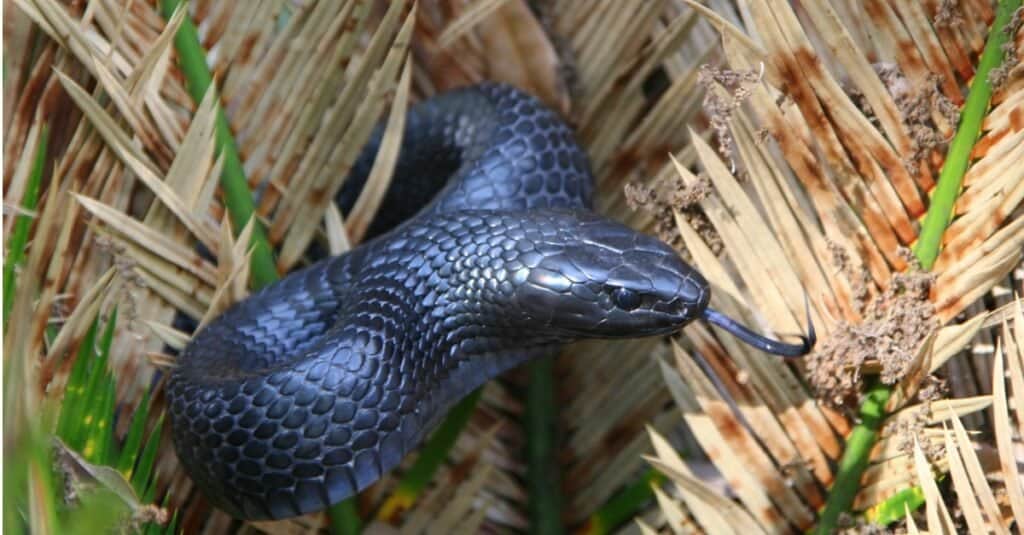Introduction
When it comes to the fascinating world of serpents, couple of species capture the creative imagination quite like the baby tiger serpent. Known for their unique pigmentation and potent venom, these serpents are an important part of Australia's distinct environment. In this comprehensive post, we will certainly explore different elements of child tiger serpents, including their behavior, environment, and just how to securely engage with them. Whether you're a wildlife enthusiast or merely curious regarding these animals, comprehending infant tiger snakes can assist foster a much deeper gratitude for nature.
Baby Tiger Snakes: What You Required to Understand About Their Habits and Habitat
What Are Child Tiger Snakes?
Baby tiger snakes are juvenile types of the very poisonous varieties understood clinically as Notechis scutatus These serpents are mainly located in coastal regions of Australia, specifically in Tasmania and southern Victoria. As they expand, their coloration changes from an extra low-key scheme to the characteristic yellow and black bands that provide their name.
One remarkable aspect of baby tiger snakes is their dimension; hatchlings typically gauge around 25-30 cm in size. Despite their tiny stature, they possess a shocking Symptoms amount of venom that can be destructive to human beings if bitten.
Physical Characteristics
Tiger serpents possess several vital physical attributes:
- Coloration: The distinctive banding pattern typically comes to be more noticable as they mature. Size: Adults can get to lengths of approximately 2 meters. Body Shape: They have a robust body that assists in swimming and earthbound movement.
Where Do Infant Tiger Snakes Live? Understanding Their Habitat
Understanding the habitat choices of infant tiger snakes is vital for both preservation efforts and public safety. These snakes grow in numerous environments:
- Wetlands: Marshes and swamps offer enough searching grounds. Coastal Regions: Often found near beaches where they can quest for prey. Woodlands: Dense plant life offers cover from predators.
Geographical Distribution
Tiger snakes are mostly found along Australia's southern coast, consisting of:
- Tasmania: Home to one of the most notorious populations. Victoria: Specifically in areas near water bodies.
Are Tiger Snakes Venomous? A Deep Dive into Their Venom
One typical question emerges when discussing child tiger serpents: "Are tiger serpents venomous?" The response is an unquestionable yes!
Venom Composition
The poison of tiger serpents consists of neurotoxins that can cause paralysis, coagulopathy (blood clot issues), and possibly death if neglected. Right here's what you need to recognize:
- Effects on Humans: An attack from a tiger snake can lead to symptoms like swelling, discomfort at the bite site, nausea or vomiting, and even breathing failure.
Comparison with Other Poisonous Snakes
In comparison to other Australian snakes such as the eastern brownish serpent or king brown snake, tiger snake venom is taken into consideration among one of the most potent. Nevertheless, fatalities are uncommon because of improved clinical therapies and accessibility to antivenom.
Behavioral Patterns of Infant Tiger Snakes
Understanding just how child tiger snakes act is important for those that reside in or see locations where these reptiles are prevalent.
Nocturnal Habits
Most baby tiger serpents display nighttime behavior. They tend to forage for food during cooler evening temperature levels. This versatility aids them stay clear of predators while boosting their searching https://privatebin.net/?6f7e98b5ae046dec#28yZa78tkM9MhsucLJgDyU9TZufwMT69eQZciDN6rsAm efficiency.
Hunting Techniques
Their searching methods include:
- Ambush Predation: Waiting still up until victim comes close. Active Foraging: Proactively moving through greenery or along rivers searching for food.
First Aid for Snake Bites: What You Should Know
Despite being interesting creatures, experiences with infant tiger snakes can bring about unsafe circumstances if attacks take place. Understanding emergency treatment procedures can save lives.
Immediate Tips After a Bite
Remain calmness; panic increases heart rate. Immobilize the affected arm or leg using a splint or bandage. Seek prompt clinical interest-- antivenom might be necessary.Creating a Serpent Bite First Aid Kit
A well-prepared emergency treatment kit should consist of:
|Item|Purpose|| ------------------------------|--------------------------------------|| Compression plaster|To debilitate the limb|| Splint|Stabilizes damaged bones or joints|| Antihistamines|Reduces allergic reactions|| Emergency call numbers|Quick accessibility during emergency situations|
Common Misconceptions About Tiger Snakes Debunked
Many Snake Identification misconceptions border these intriguing reptiles; let's clear up some misconceptions frequently held by people.
Myth # 1: All Tiger Snakes Are Aggressive
While some people may display protective behaviors when endangered, not all tiger snakes screen aggressiveness in the direction of humans unless provoked.

Myth # 2: Child Tiger Snakes Are Less Harmful Than Adults
This myth might not be better from the fact! Child tiger snakes contain nearly as much venom as adults about their dimension; thus they present significant dangers if bitten.
FAQs Concerning Infant Tiger Snakes
What do baby tiger snakes eat?- They mostly eat little animals, birds, frogs, and fish.
- Look for slim bodies with faint banding patterns that end up being a lot more pronounced as they mature.
- Yes! Birds of target and bigger reptiles may target them.
- Typically every couple of weeks as they grow rapidly throughout their early life stages.
- While some individuals do maintain them unlawfully without permits because of their dangerous nature; it's usually not suggested given their poisonous status.
- With timely medical treatment-- consisting of antivenom-- the survival price is high!
Conclusion
In recap, understanding infant tiger snakes-- what they eat, where they live, exactly how they act-- can equip us with useful expertise concerning these remarkable yet unsafe creatures. The value of education and learning bordering first aid actions can not be overemphasized; recognizing just how to respond efficiently after a bite could conserve lives while cultivating regard for our slithering next-door neighbors within Australia's rich biodiversity range.
By valuing these serpents' functions within ecological communities-- and recognizing possible risks-- we advertise coexistence instead of fear-based responses toward one another's presence in nature's grand tapestry! Whether you're a serious hiker pondering your following experience or simply curious about regional wild animals experiences near home-- this guide works as your relied on referral factor on the enigmatic globe populated by our pals-- the splendid baby tiger snake!
